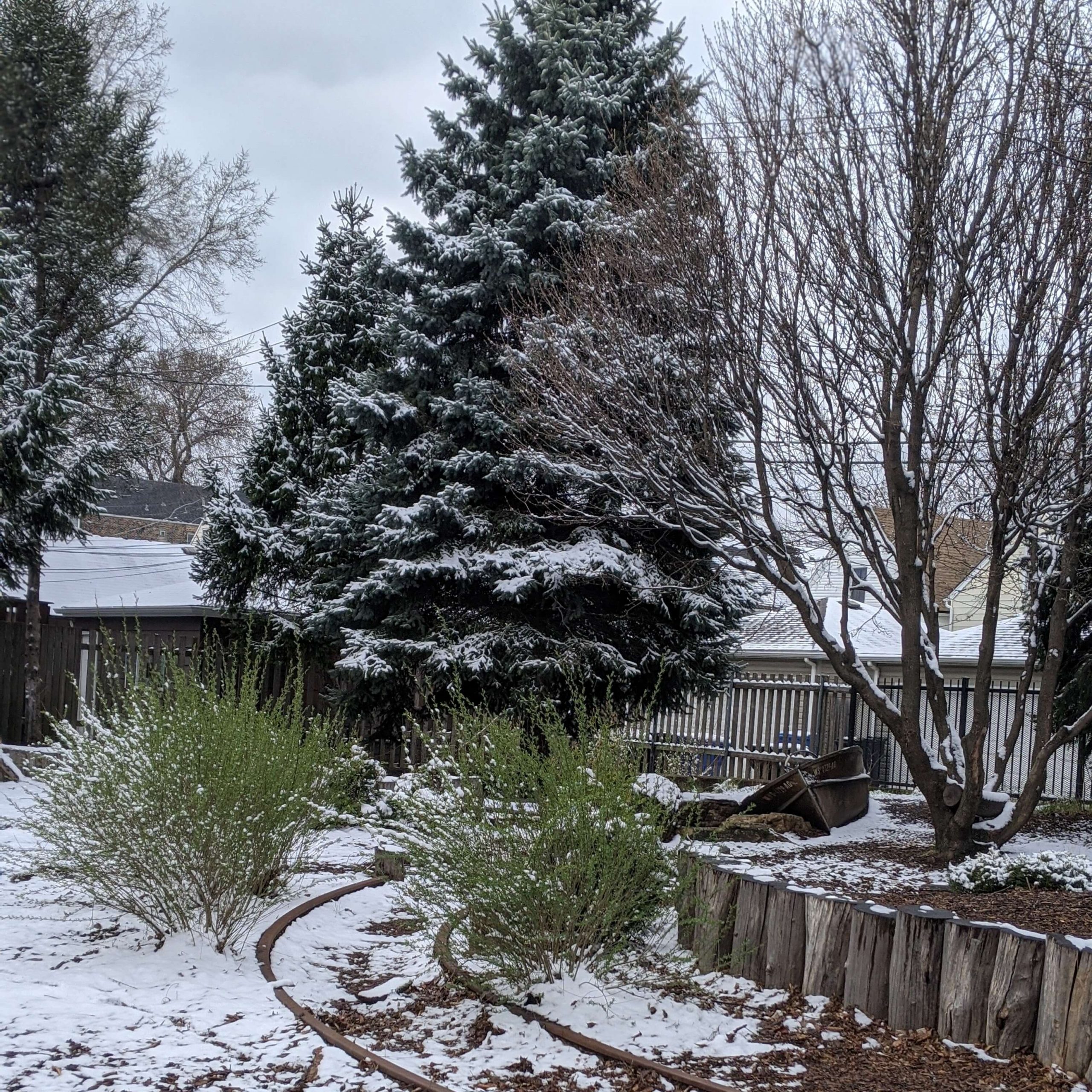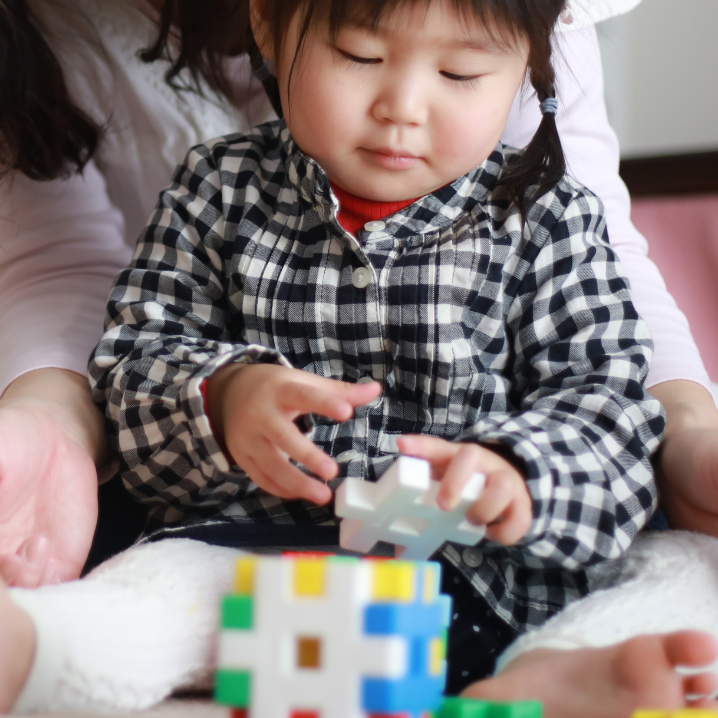Sometimes, if we take a moment to pause and look around (yes, it is hard to do!)…we can really see what is around us. We may realize that many of the answers to questions we ask are already there for us, just waiting to be discovered.
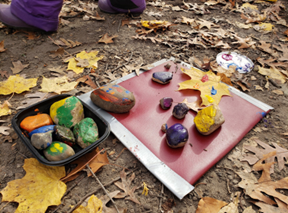 As early childhood educators and professionals, this pause may be through the process of asking a question in a new way, looking for a different outcome, truly seeing with new understanding. Or it may be a stepping stone for something we already know, but takes us into an unexplored direction.
As early childhood educators and professionals, this pause may be through the process of asking a question in a new way, looking for a different outcome, truly seeing with new understanding. Or it may be a stepping stone for something we already know, but takes us into an unexplored direction.
The journey of outdoor learning is like that.
For those that are already on this path, you know. For those curious and wanting to learn more, I invite you to read on.
Every outdoor environment has something to offer. Something to discover. Something new that can enrich our lives. It can transform the way in which children interact with the world. Our world. Their world.
The research is abundant and clear regarding the many benefits of children’s outdoor learning and nature play.
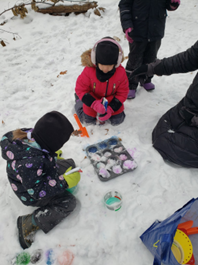 So, whether you have extensive or minimal outdoor time at your center, whether you have a forested area, a field, an open lot, or a small space or even just a few trees in which to explore, nature learning CAN happen. But, I stress that it be explored with that curious mindset. If you are thinking of all of the barriers that may stop you from implementing outdoor experiences for your children, you are not alone. But this is so new, so different! I have so much built into what I already know and do! This is too much work! Change IS hard, but as you read on for practical tools and ideas to integrate more nature into your day, you will find it is not only doable, but full of unexpected gifts. Getting Started Teaching Outside from Get toGreen through Fairfax County schools provides straightforward tips.
So, whether you have extensive or minimal outdoor time at your center, whether you have a forested area, a field, an open lot, or a small space or even just a few trees in which to explore, nature learning CAN happen. But, I stress that it be explored with that curious mindset. If you are thinking of all of the barriers that may stop you from implementing outdoor experiences for your children, you are not alone. But this is so new, so different! I have so much built into what I already know and do! This is too much work! Change IS hard, but as you read on for practical tools and ideas to integrate more nature into your day, you will find it is not only doable, but full of unexpected gifts. Getting Started Teaching Outside from Get toGreen through Fairfax County schools provides straightforward tips.
The North American Association for Environmental Education (naaee) offers three categories to plan for and organize outdoor learning experiences; TEACHING, SAFETY and the ENVIRONMENT.
When we are spending time outside with children, we can learn from both the space and the place. Learning outdoors (simply being outside!) is also a stand-alone benefit to whole-child development…simply being outside is good for children and schools.
- What do I teach?Natural Start: The Teaching and Tinkergarten: Tinkergarten outdoor learning ideas
- It seems so risky! Natural Start: The Safety
- Where? Natural Start: The Environment
Practical tips for clothing and snack time:
Sometimes starting small is best. A new nature walk routine with prompts such as “Tell me more about what you notice” and “Can you say more about that?” Or integrating a math focus such as “Nature explorers, today we are going to notice the nature around us in groups of three” may be one of the most important changes you make this year.
Sometimes re-thinking a routine typically done indoors and/or on a screen and bringing it outside, is best. Read-alouds, journaling, and songs may now take place on foam sit-upons or a tarp. Some extra minutes teaching and practicing outdoor learning routines are well worth the time.
Sometimes planning with your teaching team and doing your own adult nature-scavenger hunts, and surveying the areas for safe and creative play, is what is best.
Nature is joyful. Nature is powerful. Nature is an incredible teacher. I invite you to take the small steps or giant leaps needed in order to provide critically important outdoor experiences for our children. Working as a teacher and coach in countless spaces and places for over twenty years, I can truly say that what nature as a teacher gifts to us, is incomparable.
So, slow down, look around, and ask those questions that nature has been waiting for us to ask.
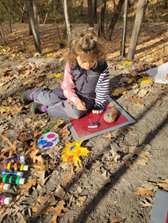 “If we truly want to make nature-based education meaningful and accessible for all children and families, we must strive to approach education in the context of not just the class, or the forest, but the place, this entire remarkable world of which we are all a part.” – Kit Harrington
“If we truly want to make nature-based education meaningful and accessible for all children and families, we must strive to approach education in the context of not just the class, or the forest, but the place, this entire remarkable world of which we are all a part.” – Kit Harrington
Kate Mitchell Alfonzo is a mother of three, a teacher, consultant and coach who loves to explore topics of teaching and learning. Whenever she can, she tries to take time to pause, ask questions and really listen,

